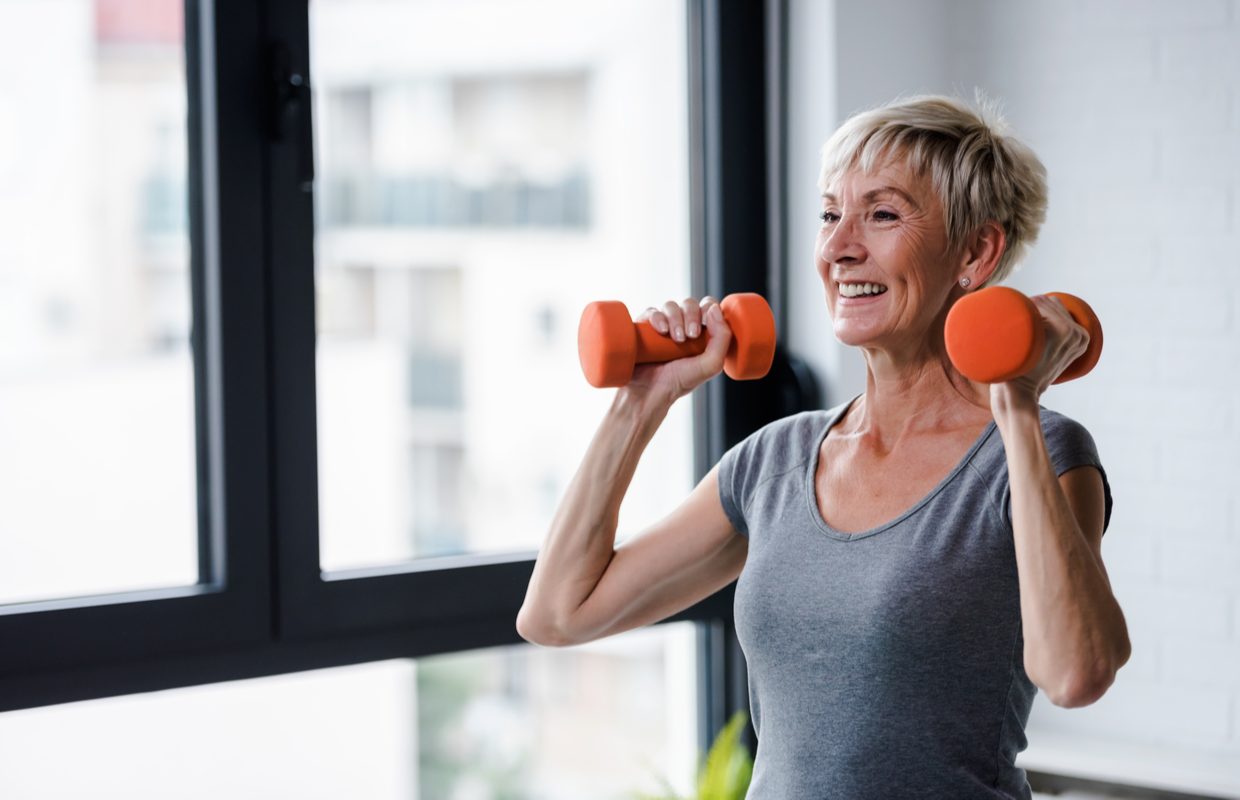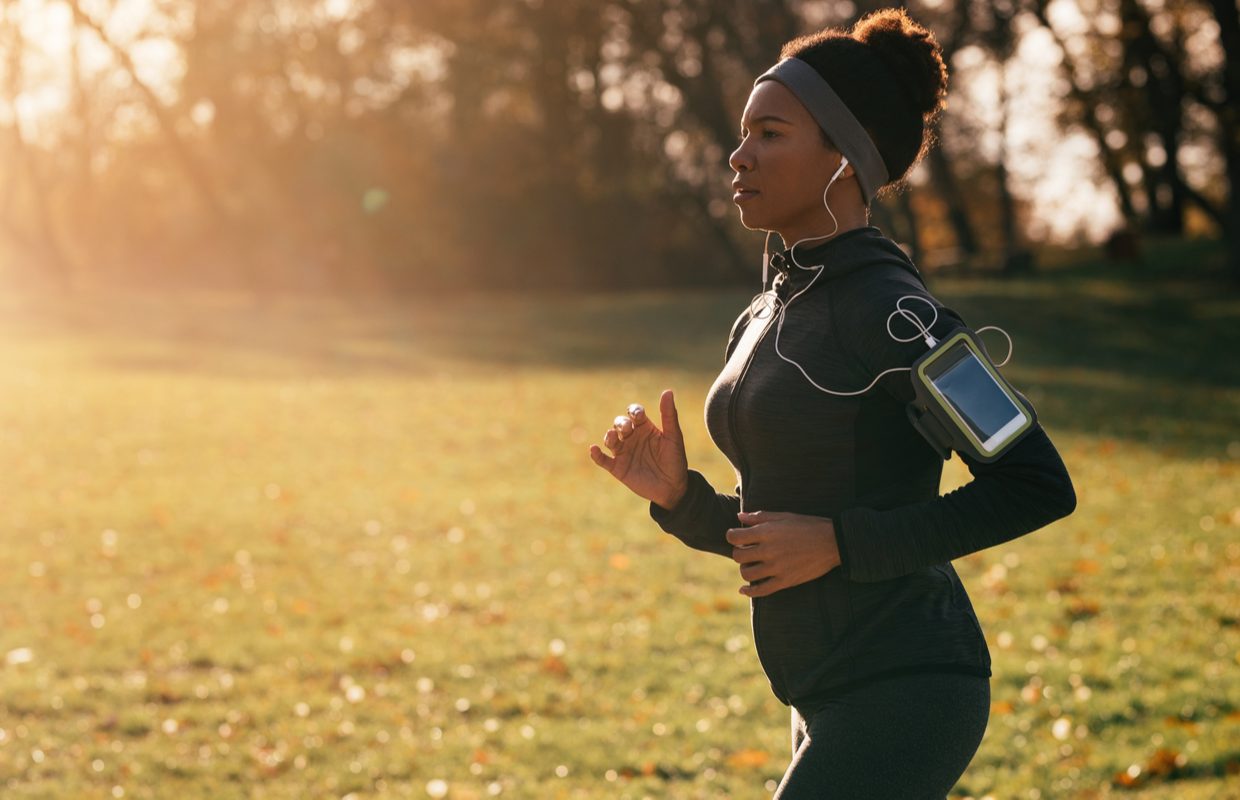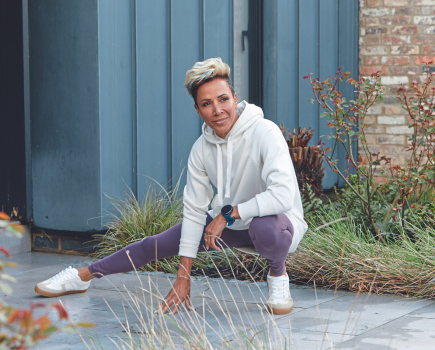From speeding up muscle recovery to working out with osteoporosis, we recruited the fitness experts to answer your questions about staying safe when exercising over 40…
‘I’m currently training for the London Marathon, but at age 52, I don’t recover as quickly as I used to. Do you have any fitness recovery tips for women over 40?’
Dr Nima Alamdari, chief physiologist on the clinical advisory board for fitness brand p.volve:
‘Great to hear you’re taking on a challenge in the London Marathon. If your training plan is already optimised for training load, there are a few physical and nutritional strategies that can help. On physical strategies, a good step is to make sure you have enough rest and recovery time (including sleep!) and restart when sufficiently recovered from demanding sessions.
‘A DIY way to do this is to give yourself a recovery score between 0-10:6+ being adequately recovered, 3-6 being suboptimal, and under 3 being poor. If you’re 6+ continue training, 3-6 reduce intensity or distance, and under 3 consider skipping the session. Some new wearable technology can help you keep track of recovery scores, too. Other strategies include recovery runs and recovery-type exercise on the days after demanding runs. This can offset pain, delay onset muscle soreness and quicken the return of muscle function.
‘For nutritional strategies, ensure you’re adequately fuelling during your runs and refuelling afterwards. A carbohydrate mix of glucose/maltodextrin and fructose can help. Ensuring enough carbohydrate will facilitate recovery by restoring muscle glycogen in preparation for future sessions. Other nutritional tips include drinking pomegranate juice or tart cherry juice that have polyphenol content. These have been shown to help speed recovery and reduce muscle soreness.’

‘Are resistance workouts better than cardio fitness for women over 40?’
Dr Nima Alamdari, chief physiologist on the clinical advisory board for fitness brand p.volve:
‘Older adults undergoing age-related muscle loss can benefit from resistance training and adequate dietary protein intake. Muscle atrophy in older adults can result in as much as 10 per cent loss of muscle mass per decade. This loss is accelerated with advancing age and is linked to poor prognosis.
‘Knowing this, resistance training that can rescue muscle mass and strength has high potential to improve quality of life and the ageing process overall. While cardiovascular exercise is also important, resistance and load-bearing fitness exercises are particularly useful as you age over 40. It’s also worth noting that older individuals are more resistant to the anabolic effects of protein. So, considering higher protein intake (even above national guidance) is also a good strategy for maintaining muscle mass, alongside resistance-exercise training.’
‘I’m keen to maintain my mobility and fitness as I age over 40 and beyond. I exercise regularly, but am wondering whether I should also visit an osteopath for maintenance?’
Nadia Alibhai, osteopath, posture expert and owner of Back 2 Well-being:
‘I like to say “motion is lotion” and the more you move the better your joints stay lubricated. Exercise is vital and when combined with osteopathy it not only helps with injury prevention, but with strength, flexibility and posture.
‘Osteopathy and/or massage treatment loosens the muscles. If you follow up with gentle movements of the joints with osteopathy, you can help maintain flexibility, mobility and pain relief. As an osteopath myself, I advise on areas that you can target within your body to strengthen when exercising, hence giving an overall holistic insight so you get the best out of your workouts.’

‘I’m a keen runner but recently slipped a disc in my lower back. Is it still safe for me to go running?’
Dylan Salamon, yoga teacher, movement coach and co-founder of Down to Flow Escapes:
‘The placement and severity of the slipped disk would affect this answer. However, it is certainly not a definite end to your running career. Consulting a trained physiotherapist or osteopath will be essential to getting the green light to begin running after the injury. From that point there are two essential factors that will get you back to running like the wind:
‘1: Conditioning the muscles around the affected area. As an oversimplification, we can say that a slipped disk came from unstable core muscles no longer protecting the spinal column enough. Therefore training the core can help protect it from further injury. The core would include the muscles on all sides of your trunk and surrounding the hips. Pilates will usually bring the best results for this.
‘2: Listen to your body. The return from an injury like this is likely to be very slow. Once you accept that, your recovery will become much smoother. Simply not pushing it, will let the body reacclimatise to its new position.’

‘I’ve been diagnosed with osteoporosis and told my cervical spine (neck area) has degenerated. What exercises should I do or avoid?’
Nolan Sunnassee, strength coach specialising in fat loss and injury rehab:
‘I would suggest you first speak with your healthcare professional about your specific case. However, without knowing all the details, there are a number of reasons we experience wear. One of these may be bad posture as a result of working on a computer or texting. It can be also due to rounding your shoulders. This applies more stress to the muscles around the neck, which, over time, results in more wear and tear in the area. Bad posture can prematurely age the discs in your spine.
‘Osteoporosis is a weakening of the bone density. This could have been due to posture, so I suggest focusing on neck strengthening and lengthening. You don’t want any moves to cause any pain or discomfort, so lie on your back on a bed or the floor, press your head into the pillow or floor so your chin goes down towards your chest – lengthening the neck and flattening out the normal curve. Press for 10-20 seconds. Relax, then repeat three more times.
‘There are a number of reasons we experience wear. One of these may be bad posture as a result of working on a computer or texting. Bad posture can prematurely age the discs in your spine.’
‘If your shoulders tend to hunch forward, then you should avoid any moves where you are pressing or pulling a weight above your head, such as shoulder presses and lat pull-downs. You should also avoid any moves that encourage internal rotation on your arms, such as chest presses and push-ups. These shorten the pec minor muscles, which can encourage a forward head posture. This can then put more stress on the neck area.
‘Instead, you could try retraction movements with your shoulders down, such as rowing, as you will be pulling your shoulder blades back and together. Also, try partial prone cobra where you lay on your front on the floor, then lift your upper body slightly, pulling your shoulder blades back and down and keeping your head in line with your spine.
‘You can also use a swiss ball. Lay with your head and shoulders on the ball, and your feet on the floor with knees bent. Press your head back into the ball, without lifting your hips. To make it harder, walk your feet forward a bit, so that less of your upper body is on the ball. However, this is something you will need to work up to gradually.’







